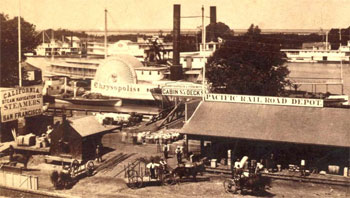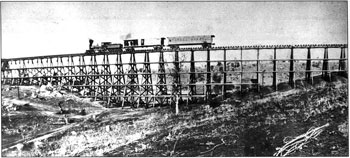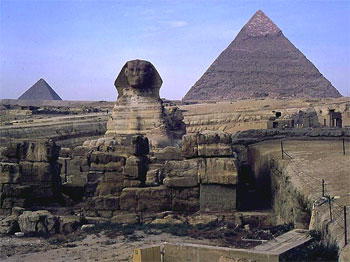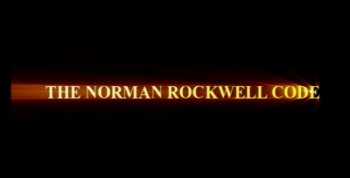 |
→ June 2006 Contents → E-Bits
|
DEATH OF A POET
June 2006 |
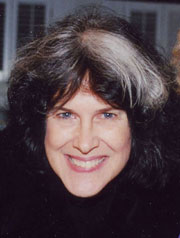 |
|
Last month E-Bits explored the fact that, cursed or not, we are living in INTERESTING TIMES. We certainly are, and that is not going to change for quite a while. We seem to have dived headlong into a process that now has a life of its own. What was that mysterious saying from childhood? “Round and round and round we go, where it stops, nobody knows.” True enough. Nobody knows how current events will give way to the future, or even how today’s microcosmic snapshot will expand into a new drama tomorrow. News junkies find themselves dizzy on a daily basis, shocked by yet another development in any and every sphere. Where is it all going? It’s anybody’s guess. We the People have become a captive audience in a Theater of the Absurd, while we watch a steady stream of outrageous characters strut and fret their hours upon the stage. Walt Handelsman adds some humor with this video, presented by Newsday.
Achieving a sense of EQUANIMITY is a challenge, as upheavals in our lives vie to keep us off balance. Some thrive in this atmosphere, but most do not. We’ve always heard the expression about throwing oneself in front of a train, but not many of us know anyone who would ever do it. I didn’t, until May 27, when a friend and much-loved correspondent did exactly that in San Francisco as he stepped onto the tracks and turned his back at the last moment in front of a train arriving from San José.
Bartolomé Alberti, 66, poet and historian, was a deep and profound thinker who was understood by few. He studied history and observed trends and patterns that escaped even his most enthusiastic fans, who were few in number. He was brilliant and eccentric and kind, with qualities of gentleness, and was possessed of decorum seemingly from an earlier era. I imagined him living in the wrong century--perhaps he belonged in the 1800’s or early 1900’s. On the other hand, he was fully engaged in 21st century computers and was at work creating an esoteric voice sync program with colleagues who appreciated his talent and uniqueness. It wasn’t the news that did Bart in, but he was perhaps more sensitive than most to the currents and tides of history, and how they apply to today’s world.
He was convinced that we learn lessons only as far back as two generations. He proposed that at the third ancestral level, our great-grandparents, we didn’t know them personally, so they did not transmit their wisdom directly to us. Hence, we are doomed to repeat the mistakes of the past. I don’t know about his theory, but I do know that I am flabbergasted by the world situation in which we now find ourselves, and cannot understand the seeming passivity of youth today. My friend Bart produced a massive volume of work, which he carefully sent to all of us who knew him before, as he put it, he went “off for good.” I’ve been thinking about Bart and about trains for days, and about the runaway train he knew we are all riding. It would be characteristic of Bart to appreciate the history of photography, and the photographic history of trains. Before I go any further, explore the treasures found on the Central Pacific Railroad Photographic History Museum site by clicking on either of the following 19th century photos.
Alfred Hart, stereoscopic detail,
Alfred Hart, Central Pacific Trestle
Whenever we encounter someone genuinely eccentric, it captures our attention. I have friends, unlike Bart, who not only wax poetic about the past but also reject the newer technologies, most especially the digital age. The past does have its charm, and many find comfort, even escape, in turning to old ways. During a significant period within the span of photographic history, stereoscopic photography was wildly popular, especially in the 19th and early-to-mid 20th centuries. This method requires two images of the same subject, set slightly apart, so that when viewed through a special device called a stereoscope, our visual system interprets the images in the same way our eyes would in looking at it directly, creating the perception of depth, or three-dimensional vision.
We rarely see stereoscopes or 3-D images today except in souvenir shops at tourist sites. But once upon a time, they were the rage. Early photophilic history buffs collected images that literally produced an in-depth view of many exotic sites around the world. When I was a kid in the '50s, we went to 3-D movies, wore paper glasses with two-colored celluloid lenses which unified the offset images, and thrilled ourselves silly as monsters seemed to jump out at us from the screen. Be sure to check out the stereoscopic displays and information on the site by following the various links by first clicking on this Norman Rockwell drawing of a boy looking through a stereoscope at 3-D photographs of The Sphinx.
Ancient history at one time or another has fascinated most of us. Nothing can compare with the Sphinx and the Great Pyramids of Egypt, though anyone with an interest in history can find endless fascination with anything that has historic value. When I think about my friend Bart, for whom history was a living entity, I want to know more about what he knew and what sights he had seen during his life. He loved the great works of history and followed trends in politics and economics, but I wonder if he ever went to Egypt, or if he saw the Mayan pyramids in Mexico, Central and South America, and if he did, what he thought about them. Explore Thais, an Italian photographic Web site presenting historic architectural wonders of ancient Greece, Rome, early Europe and Africa.
Winston Churchill declared, “History is written by the victors.” He didn’t say anything about the future being written by wannabe victors, but he also observed, “There are a terrible lot of lies going about the world, and the worst of it is that half of them are true.” With a preponderance of mistruths floating around, much of it official, but how do we discern what’s what? Previously in E-Bits we’ve discussed the problems with reality and spin, and the difficulty in separating fact from fiction. It could be that Churchill was correct in pinpointing a universal principle in times of political upheaval and war, that half of what we believe may be lies, and half of what we disbelieve may be true. In my mind, that adds up to 1/2 of everything being hooey, and may account for a portion of my friend Bart’s Weltschmerz.
Out of the mouths of babes comes the truth, but what comes out of the mouths of politicians? We have novels and the film industry to entertain those who want fantasy and escape, yet these fictions literally confuse the poor souls who are ripe to believe anything. I fear there are more of the latter than the former, all of us poor souls. I still stick with comedy as the best thing out there today. Oscar Wilde said, “If you want to tell people the truth, make them laugh, otherwise they’ll kill you.” I can’t think of any better way to make a statement than through satire or parody. The following video satire of the blatantly fictitious yet seriously debated Da Vinci Code, made me laugh a lot in a time where people are killing themselves and each other over—who knows what? Enough!! I’ll take the Norman Rockwell Code and comic relief any day.
The bottom line is that I wish I could have made my friend Bart laugh a little bit more before an accumulation of dismay caused him to end his life abruptly on his own, dramatic terms. As we move into summer, I hope you will find things that are interesting and amusing as our world keeps turning and the spin keeps spinning. Enjoy these days in June, and we will see you next month!
© Beverly Spicer
|
|
Back to June 2006 Contents
|
|

